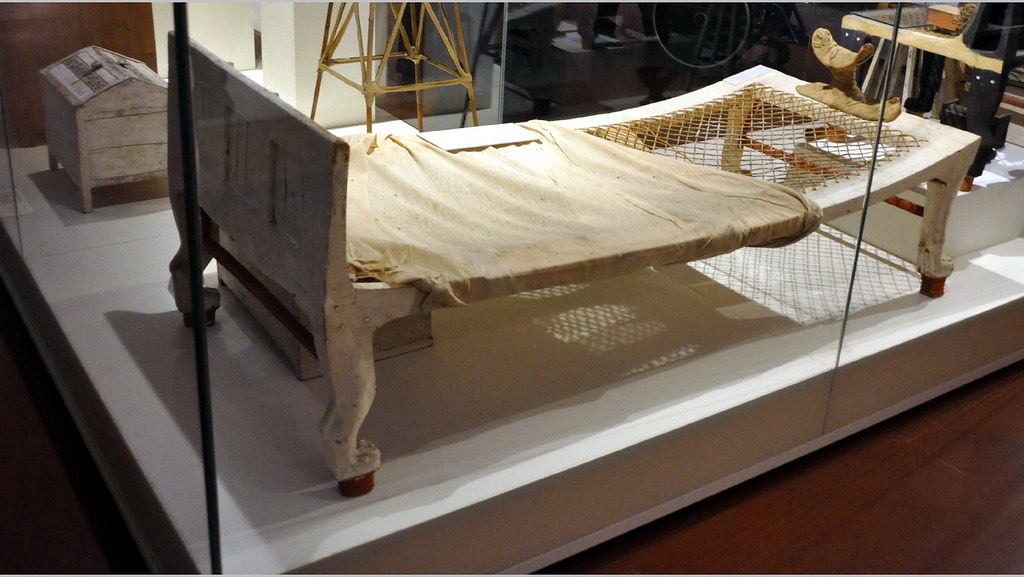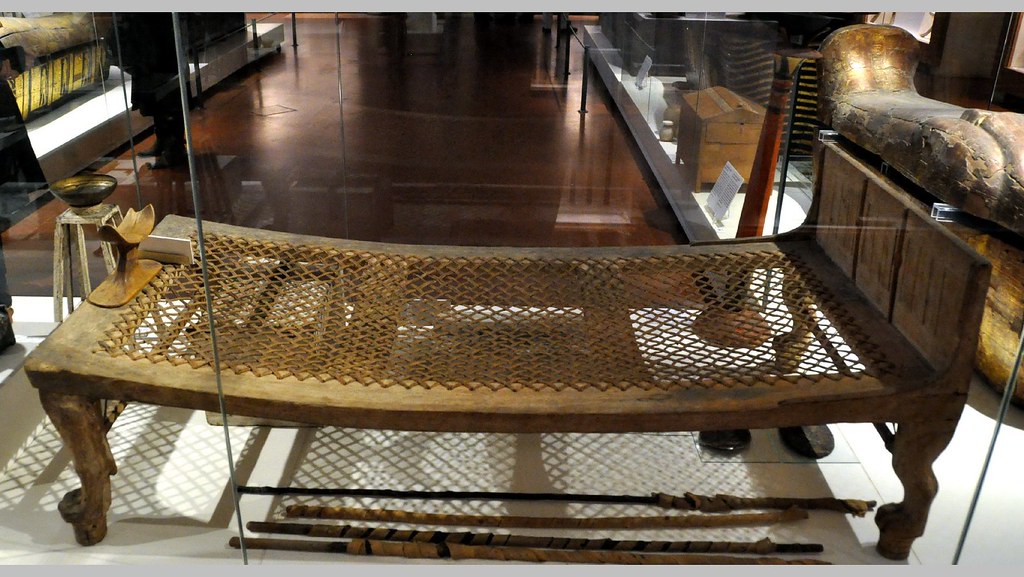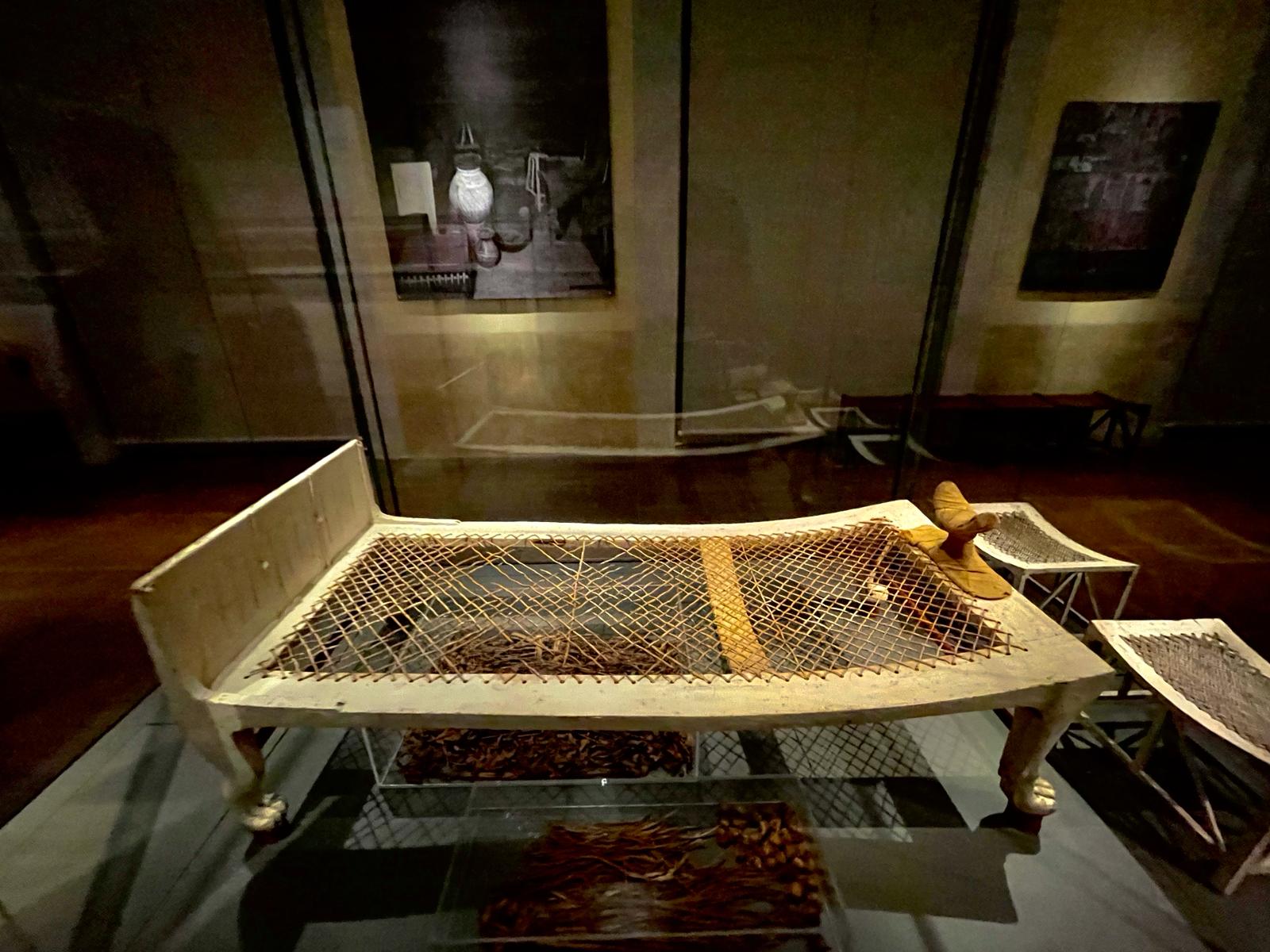The Bed of Kha, currently housed at the Turin Museum, offers an intriguing insight into the life of a high-ranking official in ancient Egypt. Kha, who held the position of Director of Works in Deir el-Medina during the 18th Dynasty, was instrumental in overseeing the construction of monumental tombs, particularly those for the royal family. His contributions spanned the reigns of Pharaohs Amenhotep II (1453–1419 BC), Thutmose IV (1419–1386 BC), and Amenhotep III (1386–1349 BC), periods marked by some of Egypt’s most impressive architectural achievements.
Kha’s Bed: A Glimpse into Elite Egyptian Life
The Bed of Kha is an extraordinary example of ancient Egyptian craftsmanship. Made from wood and adorned with intricate designs, the bed reveals the luxurious lifestyle of a high-status official. This artifact speaks volumes about the quality of life enjoyed by Kha, emphasizing his importance within Egyptian society. The bed’s craftsmanship showcases the technical skill and artistic sophistication of New Kingdom artisans, using advanced woodworking techniques that have allowed it to survive for over 3,500 years. Its preservation is a testament to both the ingenuity of the builders and the cultural reverence the ancient Egyptians placed on material objects associated with the afterlife.

Placement and Symbolism of the Bed
What sets the Bed of Kha apart is not just its beauty but also its placement. Situated outside Kha’s burial chamber in the tomb, this placement was driven by practical constraints. Ancient Egyptian tombs were typically filled with a vast array of items, from furniture to food, all intended to accompany the deceased into the afterlife. Space limitations within the tomb itself meant that many objects, including Kha’s bed, had to be placed outside the chamber. This strategic placement speaks to the spatial dynamics of Egyptian burial customs, where every object had to be carefully selected and arranged to fulfill specific spiritual functions.

Although the bed was not placed inside the burial chamber, its location outside may still have had profound symbolic significance. The ancient Egyptians believed in an afterlife where the soul would continue to live on, and items placed in the tomb were thought to ensure comfort and status even in the next world. The bed’s proximity to the tomb but outside the main burial chamber likely reflected Kha’s continued importance, signifying that his journey into the afterlife was of utmost importance to his family and community.
Cultural and Spiritual Insights
The Bed of Kha provides significant insights into the cultural and spiritual practices of ancient Egypt. The object’s inclusion in the tomb highlights the Egyptians’ belief that all material objects had a role in supporting the deceased’s transition into the afterlife. For an official like Kha, who held considerable influence and responsibility, the bed symbolized his status and would have been seen as a tool to ensure that he maintained his place of honor in the next life.

Artifacts such as Kha’s bed also reflect the social structure of ancient Egyptian society, where individuals of high rank had access to luxury and comfort both in life and death. By studying the bed, historians can better understand the material culture of the New Kingdom and the importance placed on ensuring that the dead were equipped for eternity. This attention to detail in burial practices reveals much about the Egyptian worldview, where life after death was as significant as life itself.
A Legacy Preserved in the Turin Museum
Today, the Bed of Kha continues to capture the imagination of museum visitors around the world. Displayed in the Turin Museum, it is not just a piece of furniture; it is a physical link to a world that has long since passed, offering a glimpse into the life of one of Egypt’s most influential officials. Beyond its artistic value, the bed speaks to the cultural legacy of the ancient Egyptians, whose influence on art, architecture, and spirituality continues to resonate across millennia.
In conclusion, the Bed of Kha is a vital artifact that serves as a bridge between ancient Egyptian society and the modern world. Through its exquisite craftsmanship and thoughtful placement, it provides us with insights into both the daily lives of elite Egyptians and the profound spiritual beliefs that shaped their culture. For anyone visiting the Turin Museum, the bed offers a fascinating glimpse into the richness of ancient Egypt’s material culture and its enduring legacy in history.

